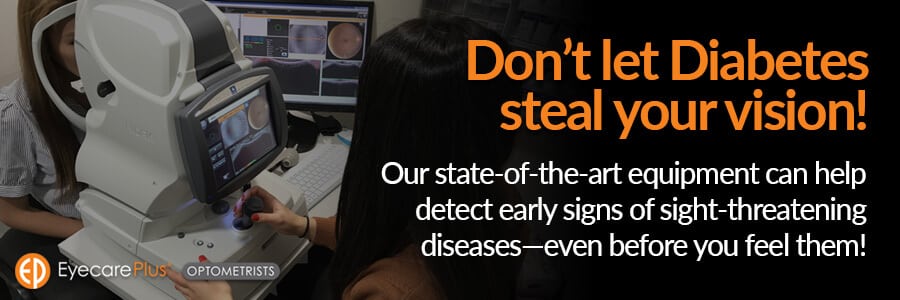Around 1.7 million Australians are at risk of severe vision loss and blindness caused by diabetes. You may be aware of the general harm diabetes can do to your body, but how does diabetes affect the eyes?

ethnicity, health and environmental factors. Regardless of the cause,
uncontrolled diabetes puts one at high risk for diabetic eye diseases.
Here are 5 ways diabetes can be devastating to your sight:
1. Diabetes can cause blurred vision.
How are blurred vision and diabetes connected? When blood sugar levels go up, blood gets thicker. Thicker blood causes the lens of the eye to swell, affecting the ability to focus.
Jenny, age 45, asks, “I’ve been wondering why I sometimes get blurred vision and find it hard to concentrate at times. I’m about 50 pounds overweight and a diabetic.”
Eyecare Plus Optometrist Dr SooJin Nam states, “High blood sugars can cause blurred vision, especially if one notices this after meals. Difficulty concentrating can be from an entirely different thing, though diabetes can be one of them.
“We advise patients who are diabetic to try to keep their body weight as close to ideal as possible. If you lose the excess 50 pounds, it is very likely that your blood sugar levels would have gone down too.
“Do note that a range of other medical conditions can also cause blurred vision. So if you experience blurred vision, it is best to check with your optometrist or eye specialist to know what is definitively causing this.”
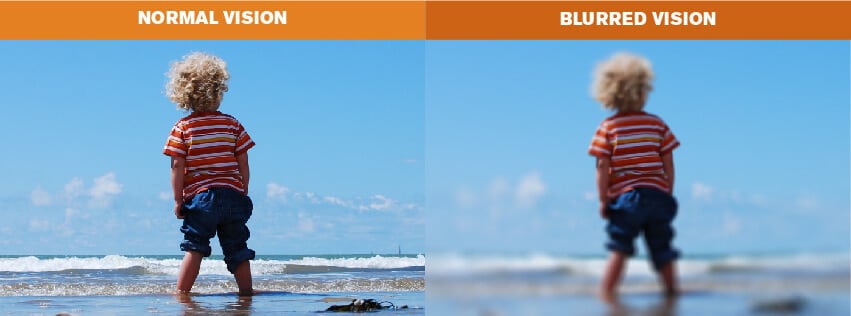
2. Diabetes increases your risk for glaucoma.
Glaucoma is a group of diseases that damage the eye’s optic nerve—the bundle of nerve fibers that connects the eye to the brain. If the damage continues, glaucoma can lead to permanent vision loss.
Because glaucoma occurs without early symptoms, it is also known as the “silent thief of sight”.
Theresa, age 36, asks, “I am a diabetic and have a family history of glaucoma. What are the odds I would also develop glaucoma?”
SooJin Nam states, “The risk for glaucoma increases with age for everyone, not just for diabetics. But if you’re an adult with diabetes, your risk for glaucoma is nearly doubled. The longer you have diabetes, the chances for you to develop glaucoma increases.
“This is why it is important to have a glaucoma check as part of your yearly dilated eye test, especially if you have diabetes. We also urge our diabetic patients to always maintain glucose control to lower their risk of complications, including those of their eyes.”
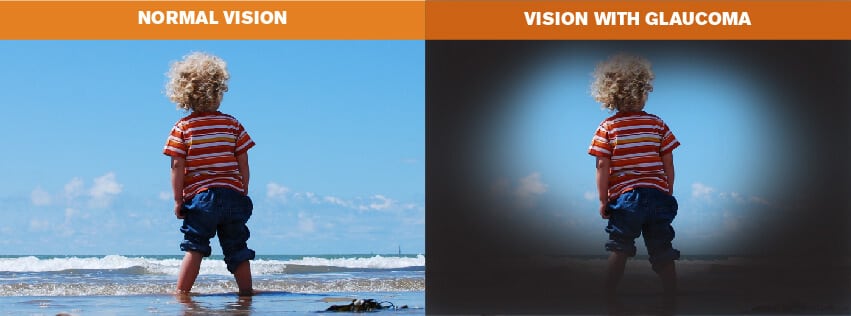
3. Diabetes increases your risk for cataracts.
Cataract is a clouding of the eye’s naturally clear lens. The lens is part of our eye that helps focus light (or an image) on the retina, so it’s important for the lens to be clear for the retina to receive a sharp image.
Adults with diabetes are 2-5 times more likely than those without diabetes to develop cataract.
Harold, age 37, asks, “I heard that everyone gets cataracts eventually. I have diabetes mellitus and was told that cataracts can develop as early as in my forties! The thought scares me.”
SooJin Nam states, “Most cataracts are related to aging, but they tend to develop at an earlier age in people with diabetes.
“If you have diabetes, there are two very important steps you can take that will help prevent or delay cataracts. One is to work closely with your GP to maintain good blood sugar levels.
“Secondly, it is important to have regular comprehensive eye tests to monitor the signs of cataracts as well as other diabetic eye diseases.”
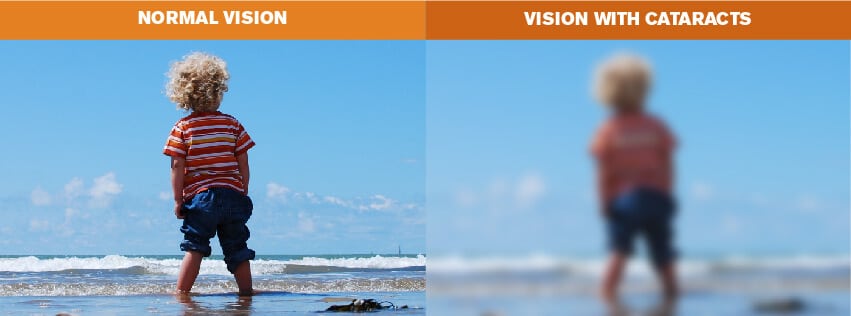
4. You’re at high risk of developing diabetic retinopathy.
Diabetic retinopathy involves changes to the blood vessels of the retina that cause them to bleed or leak fluid, distorting vision. Diabetic retinopathy is the most common cause of vision loss among people with diabetes and a leading cause of blindness among working-age adults.
Roger, age 57, asks, “My friend was driving when suddenly the colour just vanished from his eyes. They said it was caused by diabetic retinopathy? What are the early signs of diabetic retinopathy?”
SooJin Nam states, “Unfortunately, in the early stages of diabetic retinopathy, you won’t feel any signs or symptoms. Symptoms are generally only felt when diabetic retinopathy is at its more advanced stages and these may include floaters, distortion and blurred vision.
“Because diabetic retinopathy often goes unnoticed until vision loss starts to occur, we urge that patients with diabetes should get a comprehensive dilated eye exam at least once a year.”

5. Your macula could swell, distorting your vision.
Macular edema is the buildup of fluid in the macula (the area in the centre of the retina). Diabetic macular edema is a consequence of diabetic retinopathy that causes swelling in the macula. Since the macula is responsible for sharp, straight-ahead vision, when it swells and thickens, vision is distorted.
If this goes untreated, diabetic macular edema can lead to blindness.
Stanley, age 36, asks, “My father has macular degeneration and I have a family history of diabetes, both in my dad’s and mom’s side. I am in my thirties, physically in good shape, and my blood sugar levels are ace. How often should I have regular eye tests?”
SooJin Nam states, “In order to have diabetic macular edema, you must first have diabetic retinopathy. This condition develops in people who have had diabetes for an extended amount of time.
“If you have not developed diabetes but have a strong family history of it, you should get comprehensive eye tests at least once a year.”
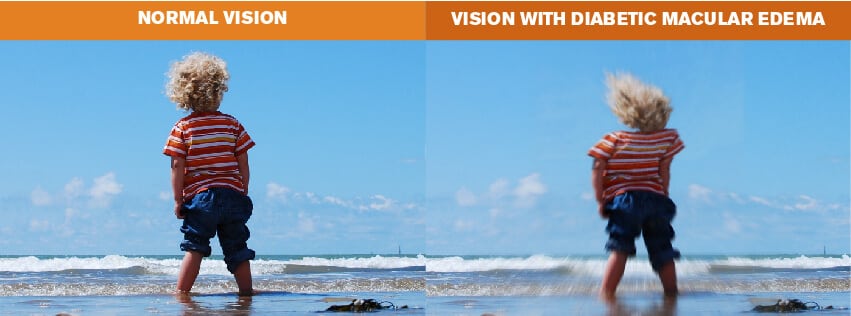
Early Detection Can Save Your Sight
Early detection, timely treatment and the appropriate follow-up care of diabetic eye diseases can help prevent against vision loss.
A yearly comprehensive eye test is critical for diabetics to help pick up any symptoms of diabetic eye diseases even at their earliest stages.
